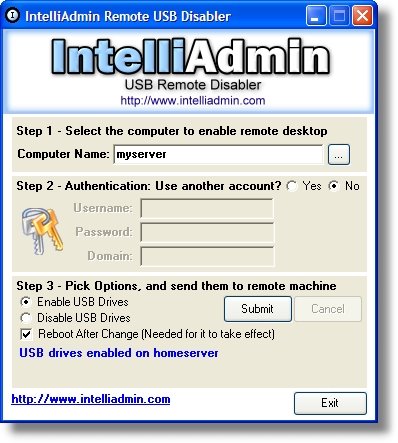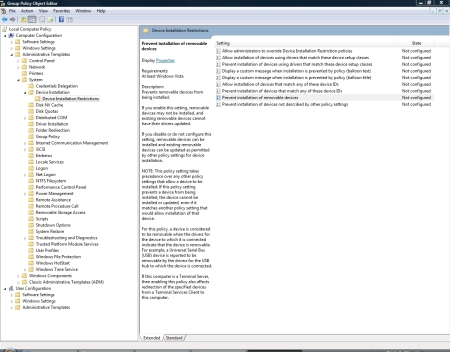
- #Group policy disable usb drives windows 10 password
- #Group policy disable usb drives windows 10 windows
#Group policy disable usb drives windows 10 windows
Require additional authentication at startup (Windows Server 2008 and Windows Vista).

#Group policy disable usb drives windows 10 password
Disallow standard users from changing the PIN or password.Disable new DMA devices when this computer is locked.Configure minimum PIN length for startup.Require additional authentication at startup.Allow devices with Secure Boot and protected DMA ports to opt out of preboot PIN.The following policy settings can be used to determine how a BitLocker-protected drive can be unlocked. BitLocker group policy settings include settings for specific drive types (operating system drives, fixed data drives, and removable data drives) and settings that are applied to all drives. The following sections provide a comprehensive list of BitLocker group policy settings that are organized by usage. BitLocker group policy settings detailsįor more details about Active Directory configuration related to BitLocker enablement, please see Set up MDT for BitLocker. The Manage-bde command-line can also be used in this scenario to help bring the device into compliance. An example of this scenario is when the BitLocker encryption method or cipher strength is changed. In other scenarios, to bring the drive into compliance with a change in Group Policy settings, BitLocker may need to be disabled and the drive decrypted followed by reenabling BitLocker and then re-encrypting the drive. After this process is complete, BitLocker is compliant with the Group Policy setting, and BitLocker protection on the drive can be resumed. In this situation, BitLocker protection needs to be suspended by using the Manage-bde command-line tool, delete the password unlock method, and add the smart card method. This situation could occur, for example, if a removable drive is initially configured for unlock with a password but then Group Policy settings are changed to disallow passwords and require smart cards.

If multiple changes are necessary to bring the drive into compliance, BitLocker protection may need to be suspended, the necessary changes made, and then protection resumed. This scenario could occur, for example, if a previously encrypted drive was brought out of compliance by change in Group Policy settings. When a drive becomes out of compliance with Group Policy settings, only changes to the BitLocker configuration that will bring it into compliance are allowed. If a computer isn't compliant with existing Group Policy settings, BitLocker may not be turned on, or BitLocker configuration may be modified until the computer is in a compliant state. Most of the BitLocker Group Policy settings are applied when BitLocker is initially turned on for a drive. For details about those settings, see TPM Group Policy settings.īitLocker Group Policy settings can be accessed using the Local Group Policy Editor and the Group Policy Management Console (GPMC) under Computer Configuration > Administrative Templates > Windows Components > BitLocker Drive Encryption. A separate set of Group Policy settings supports the use of the Trusted Platform Module (TPM).


 0 kommentar(er)
0 kommentar(er)
